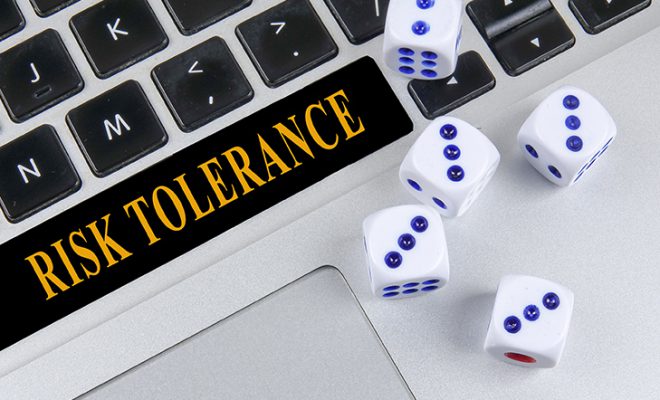Things You Need to Know About US Corporate Bonds to Invest Wisely

All our lives, the one apparent motive that we strive for is financial security. We work, save, and invest only to keep our future secured, as uncertainty knows no bounds. People are always taught to be prepared with adequate savings and funds that bring security and provide tangible assurance. However, with a multitude of investment options, how can investors effectively choose the one that can render fruitful results when in need? Picking out the right investment method is indeed a very difficult choice, but one that is dependent typically on your attitude, ability to take risks, and the ultimate goal of investment.
Bonds make for an ideal choice for investors searching for options that are reasonably safe and yield higher interest. The world of bonds can be slightly intimidating for new investors. You may have trouble understanding the jargon, concept, risks involved, etc. However, truth be told, bonds are not that complicated. But it is critical to decide what type of bonds to invest in.
Corporate bonds, in this perspective, have been gaining immense popularity. By choosing to invest in corporate bonds, you lend money to the corporation issuing the bond, in return for a legal commitment by the company to give out interest and also return the principal amount, upon maturity. Corporate bonds have become an investment choice for many in the U.S. because of their alternative, more stable, and lucrative returns, as compared to shares.
Here are some things you need to know beforehand if you want to invest in US corporate bonds:
Table of Contents
1. Riskier but rewarding
The U.S. corporate bonds are high on risk compared to government bonds, but are still considered a safe investment. They are also highly rewarding in terms of interest. Even after the fall of bond rates in the year 2018-2019, the interest rates for corporate bonds issued by top U.S. companies was marked at 3.14% (for 7-10-year bonds) which is quite high compared to that of a treasury investment (10 years) at 1.37%, an all-time low. Also, the good quality corporate bonds recorded a return of 14.2%, in 2019, which is the highest it has been since the 2009 financial crisis.
2. Strong expectations for 2020
As per the last recorded statistics, the U.S. corporate bonds market witnessed strong growth in the last quarter of 2019. This has further continued into the beginning of 2020 amidst geopolitical stress and prospects that the interest rates will not be raised anytime soon by the Federal Reserve. Moreover, as a result of the current unrest between Iran and America, the U.S. government bond yields have fallen tremendously, pushing investors towards corporate bonds. With strong statistics in 2019, it is expected that the present year is likely to yield promising returns for investors. Given the considerable economic situation and favorable monetary policies backed by the U.S. Central Bank, and despite the slight volatility created by the U.S. Presidential elections, the corporate bonds market is expected to stay steady for the rest of the year.
3. A modest rise in bond yields
With signs that the global economic slowdown is coming to an end, it is expected that the positive push will help raise the bond yields. Growth factors have seemingly stabilized and have begun to recover softly, sending out positive indications about the bond market.
With this knowledge in mind, here is what you need to do before making the decision to invest in bonds:
1. Check ratings before investing
While the corporate bond market seems promising, it is still advisable to scrutinize rates before investing. Corporate bonds are issued by both public and private companies, each with their own risks. However, it is best to consider the risk ratings of each company before investing. Risk ratings are issued by reliable labels such as Standard & Poor’s, Moody’s Corporation, and Fitch Ratings. The best corporate bonds with AAA ratings carry less risk and reasonably fair returns, and so on. It can also be beneficial to check for periodic reports filed by companies, as well as price and trading histories, to ensure you are investing in the right space.
2. Hold a diversified portfolio
While investing in U.S. corporate bonds, remember to always hold a diversified portfolio which includes high-rated corporate bonds, as well as others that may have high risk, but could be promising. It is important to keep a balance to ensure reliable income from a portfolio. Also, it is best to invest across asset classes to spread the risk evenly, and hold different durations of bonds, both short term and long term.
Even with such credentials, the U.S. corporate bond market is vulnerable to certain negatives including the economic slowdown, policy risks, as well as credit-risk segregation. That said, even with these negatives, the outlook of the U.S. corporate bonds is fairly positive. Though the past year was very rewarding for investors, this year is expected to set out positive returns, but not equivalent to that of the previous year. Moreover, the corporate credit metrics are expected to improve and float with more stability. This can put more companies in the ‘A’ category of risk ratings, providing investors more choices to invest and diversify.
To sum it up
All investments must be made after careful analysis, complete information, and thorough consideration. The choice of portfolio is dependent on the investor’s goal, risk appetite, age, and other factors. It is also important for an investor to assess their personal and collective family goals, and evaluate their spending habits before investing in any corporate bonds. Corporate bonds tend to be riskier, but they are also highly rewarding. Hence, careful investment is the ultimate key.
If you are interested in investing in the current financial climate, reach out to financial advisors as well as the to find the right approach to investing that fits your needs.
Here’s all you need to know the things before going to invest in US Corporate bonds. Want to learn more about the investment then you can find here.

















